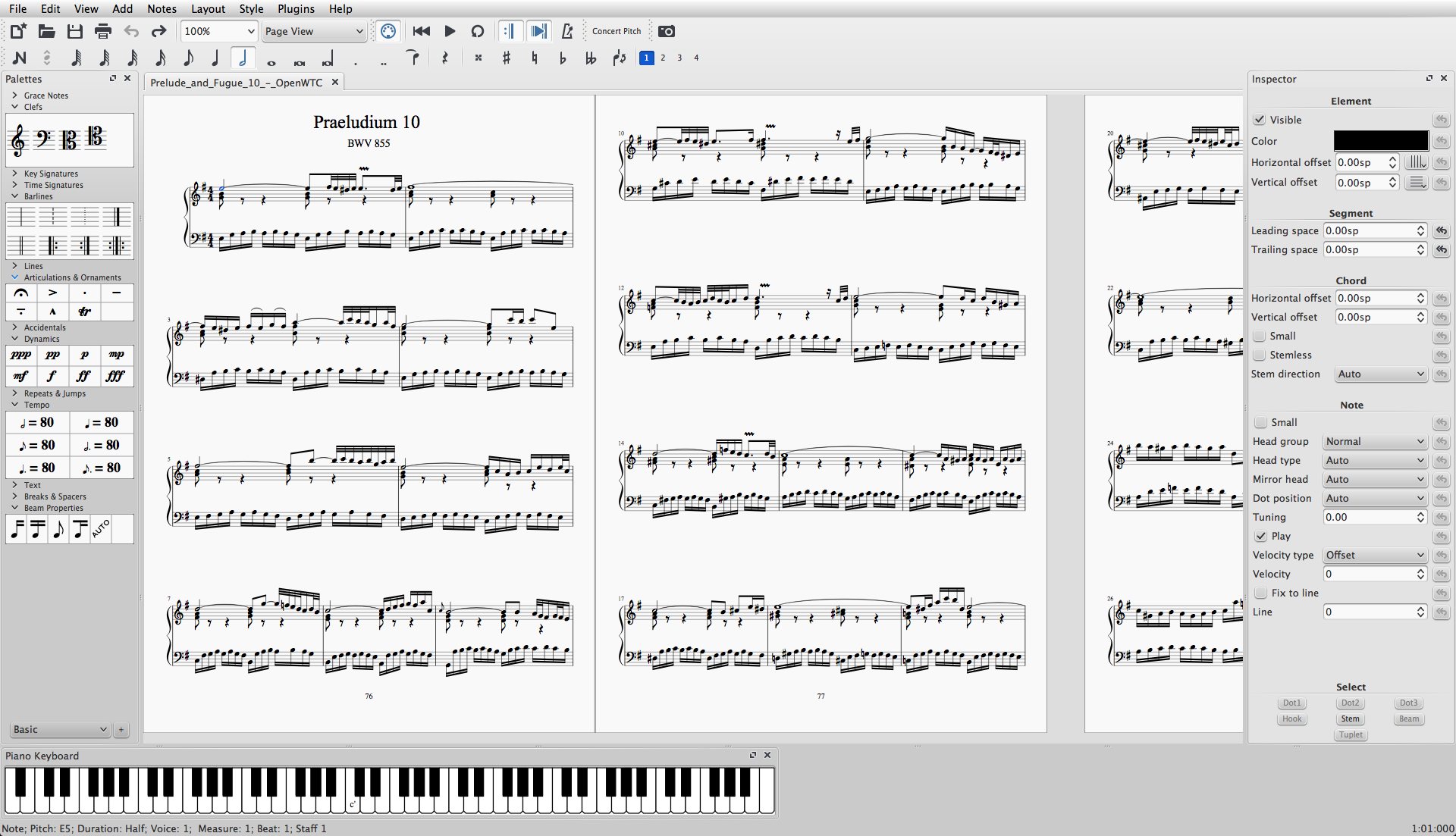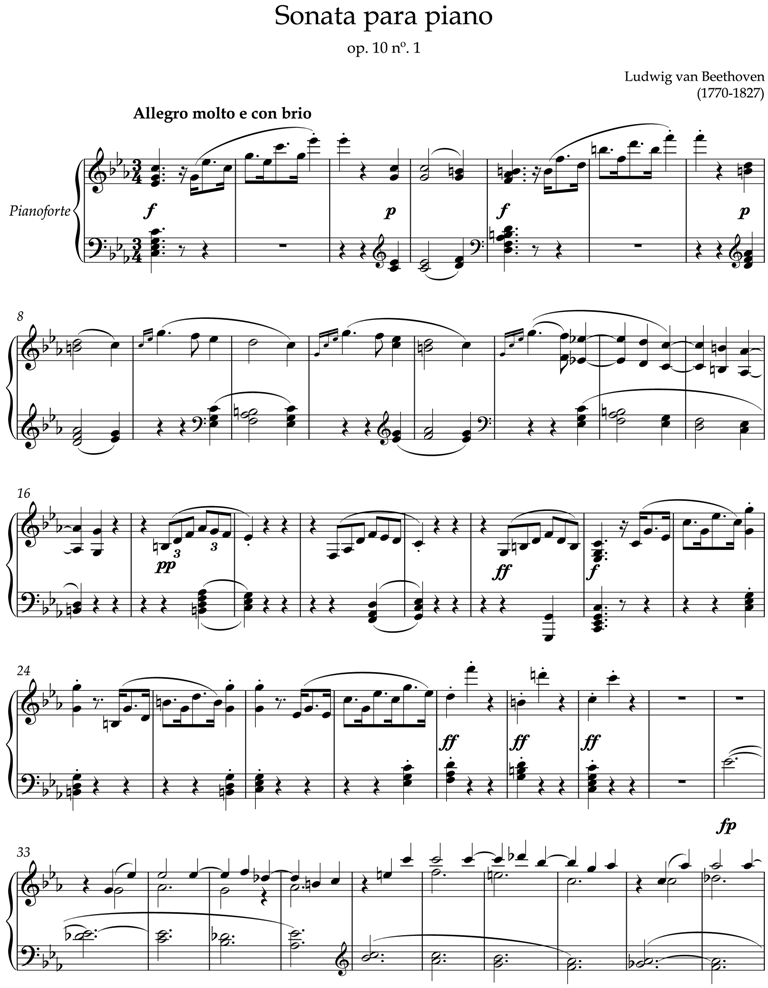|
SMuFL
Standard Music Font Layout, or SMuFL, is an open standard for music font mapping. The standard was originally developed by Daniel Spreadbury of Steinberg for its scorewriter software Dorico, but is now developed and maintained by the W3C Music Notation Community Group, along with the standard for MusicXML (which, itself, supports SMuFL). SMuFL is a substantial development beyond the previous de facto mapping standard created by Cleo Huggins in the ''Sonata'' font she designed for Adobe in 1985 (which was Adobe's first original typeface). Numerous scorewriters support SMuFL (, these include Dorico, Finale and MuseScore but not LilyPond or Sibelius) and a number of free and commercial SMuFL-compliant fonts are available. ''Bravura'', designed by Daniel Spreadbury of Steinberg for Dorico and initially released in 2013, is the SMuFL reference font. Support SMuFL support was added to the leading scorewriters in the following versions: * MuseScore from version 2.0 in 2015 *Dorico f ... [...More Info...] [...Related Items...] OR: [Wikipedia] [Google] [Baidu] |
Dorico
Dorico () is a scorewriter software; along with Finale and Sibelius, it is one of the three leading professional-level music notation programs. Dorico's development team consists of most of the former core developers of a rival software, Sibelius. After the developers of Sibelius were laid off in a 2012 restructuring by their corporate owner, Avid, most of the team were re-hired by a competing company, Steinberg, to create a new software. They aimed to build a "next-generation" music notation program, and released Dorico four years later, in 2016. History The project was unveiled on 20 February 2013 by the Product Marketing Manager, Daniel Spreadbury, on the blog ''Making Notes'', and the software was first released on 19 October 2016. The program's title ''Dorico'' was revealed on the same blog on 17 May 2016. The name honours the 16th-century Italian music engraver Valerio Dorico (1500 – c. 1565), who printed first editions of sacred music by Giovanni Pierluigi da Pa ... [...More Info...] [...Related Items...] OR: [Wikipedia] [Google] [Baidu] |
MusicXML
MusicXML is an XML-based file format for representing Western musical notation. The format iopen fully documented, and can be freely used under the W3C Community Final Specification Agreement. History MusicXML was invented by Michael Good and initially developed by Recordare LLC. It derived several key concepts from existing academic formats (such as Walter Hewlett's ASCII-based MuseData and David Huron's Humdrum). It is designed for the interchange of scores, particularly between different scorewriters. MusicXML development was managed by MakeMusic following the company's acquisition of Recordare in 2011. MusicXML development was transferred to the W3C Music Notation Community Group in July 2015. Version 1.0 was released in January 2004. Version 1.1 was released in May 2005 with improved formatting support. Version 2.0 was released in June 2007 and included a standard compressed format. All of these versions were defined by a series of document type definitions (DTDs). An XML ... [...More Info...] [...Related Items...] OR: [Wikipedia] [Google] [Baidu] |
Finale (scorewriter)
Finale is a proprietary music notation software developed and released by MakeMusic for Microsoft Windows and macOS since 1988. Functionality Finale's tools are organized into multiple hierarchically organized palettes, and the corresponding tool must be selected to add or edit any particular class of score element. Voices are available in Finale as well. Several of Finale's tools provide an associated menu just to the left of the Help menu, available only when that particular tool is selected. In general, operation of Finale bears at least some surface similarities to Adobe Photoshop. On the screen, Finale provides the ability to color code several elements of the score as a visual aid; on the print-out all score elements are black (unless color print-out is explicitly chosen). With the corresponding tool selected, fine adjustment of each set of objects in a score are possible either by clicking and dragging or by entering measurements in a dialog box. A more generalized s ... [...More Info...] [...Related Items...] OR: [Wikipedia] [Google] [Baidu] |
Steinberg
Steinberg Media Technologies GmbH (trading as Steinberg) is a German musical software and hardware company based in Hamburg. It develops music writing, recording, arranging, and editing software, most notably Cubase, Nuendo, and Dorico. It also designs audio and MIDI hardware interfaces, controllers, and iOS/ Android music apps including Cubasis. Steinberg created several industry standard music technologies including the Virtual Studio Technology (VST) format for plug-ins and the ASIO (Audio Stream Input/Output) protocol. Steinberg has been a wholly owned subsidiary of Yamaha since 2005. History The company was founded in 1984 by Karl Steinberg and Manfred Rürup in Hamburg. As early proponents and fans of the MIDI protocol, the two developed Pro 16, a MIDI sequencing application for the Commodore 64 and soon afterwards, Pro 24 for the Atari ST platform. The ST had built-in MIDI ports which helped to quickly increase interest in the new technology across the music world. ... [...More Info...] [...Related Items...] OR: [Wikipedia] [Google] [Baidu] |
Scorewriter
A scorewriter, or music notation program is software for creating, editing and printing sheet music. A scorewriter is to music notation what a word processor is to text, in that they typically provide flexible editing and automatic layout, and produce high-quality printed results. Most scorewriters, especially those from the 2000s, can record notes played on a MIDI keyboard (or other MIDI instruments), and play music back via MIDI or virtual instruments. Playback is especially useful for novice composers and music students, and when musicians are not available or affordable. Several free programs are widely used, such as MuseScore. The three main professional-level programs are Finale, Sibelius and Dorico. Comparison with multitrack sequencer software Multitrack sequencer software and scorewriters typically employ different methods for notation input and display. Scorewriters are based on traditional music notation, using staff lines and round note heads, which originate ... [...More Info...] [...Related Items...] OR: [Wikipedia] [Google] [Baidu] |
Adobe Inc
Adobe Inc. ( ), originally called Adobe Systems Incorporated, is an American multinational computer software company incorporated in Delaware and headquartered in San Jose, California. It has historically specialized in software for the creation and publication of a wide range of content, including graphics, photography, illustration, animation, multimedia/video, motion pictures, and print. Its flagship products include Adobe Photoshop image editing software; Adobe Illustrator vector-based illustration software; Adobe Acrobat Reader and the Portable Document Format (PDF); and a host of tools primarily for audio-visual content creation, editing and publishing. Adobe offered a bundled solution of its products named Adobe Creative Suite, which evolved into a subscription software as a service (SaaS) offering named Adobe Creative Cloud. The company also expanded into digital marketing software and in 2021 was considered one of the top global leaders in Customer Experience Manag ... [...More Info...] [...Related Items...] OR: [Wikipedia] [Google] [Baidu] |
LilyPond
LilyPond is a computer program and file format for music engraving. One of LilyPond's major goals is to produce scores that are engraved with traditional layout rules, reflecting the era when scores were engraved by hand. LilyPond is cross-platform, and is available for several common operating systems; released under the terms of the GNU General Public License, LilyPond is free software and part of the GNU Project. History The LilyPond project was started in 1996 by Han-Wen Nienhuys and Jan Nieuwenhuizen, after they decided to abandon work on MPP (MusiXTeX PreProcessor), a project they began collaborating on in 1995. Its name was inspired both by the Rosegarden project and an acquaintance of Nienhuys and Nieuwenhuizen named Suzanne, a name that means lily in Hebrew (). Version 1.0 LilyPond 1.0 was released on July 31, 1998, highlighting the development of a custom music font, Feta, and the complete separation of LilyPond from MusiXTeX. Version 2.0 LilyPond 2.0 was relea ... [...More Info...] [...Related Items...] OR: [Wikipedia] [Google] [Baidu] |
Sibelius (scorewriter)
Sibelius is a scorewriter program developed and released by Sibelius Software Limited (now part of Avid Technology). It is the world's largest selling music notation program. Beyond creating, editing and printing music scores, Sibelius can also play the music back using sampled or synthesised sounds. It produces printed scores, and can also publish them via the Internet for others to access. Less advanced versions of Sibelius at lower prices have been released, as have various add-ons for the software. Named after the Finnish composer Jean Sibelius, the company was founded in April 1993 by twin brothers Ben and Jonathan Finn to market the eponymous music notation program they had created. It went on to develop and distribute various other music software products, particularly for education. In addition to its head office in Cambridge and subsequently London, Sibelius Software opened offices in the US, Australia and Japan, with distributors and dealers in many other coun ... [...More Info...] [...Related Items...] OR: [Wikipedia] [Google] [Baidu] |




